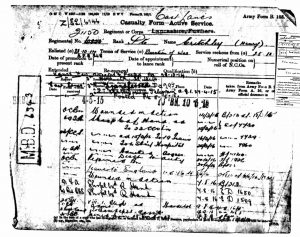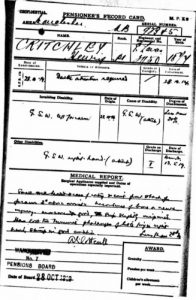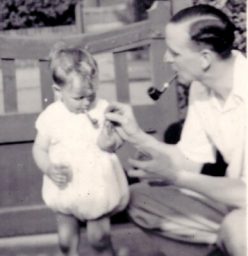World War 1 Records
To start looking for your ancestors WW1 records you need to your at least your ancestors name and regiment, it is useful to have a knowledge of medals they received and the dates and region where they served.
Many records are available at the National Archives, however not all – some are still with the Ministry of Defence. Here is a handy link that details – Rank Structures of the British Army.
Ancestry.co.uk gives access to documents several documents all with the prefix WO – meaning War Office such as WO363 – Service Records, WO364 – Pensions Records and WO329 Silver War Badge Rolls, Medal Rolls Index Cards.
Unfortunately not all records from WW1 survived WW2 – in September 1940 a fire caused by an incendiary device caused fire and water damage to almost two thirds of the 6.5 million records whilst they were stored at War Office Record Store, Arnside Street, London – these have become known as the Burnt Documents WO363.
During 1996 a massive project with help from the National Lottery commenced to digitise and preserve the documents onto microfilm.
Amongst those hopefully you will find records relating to soldiers that:
- were discharged between 1914-1920
- killed in action between 1914-1920
- served in the war and died of wounds/illness but not discharged with a pension
- were demobilised at the end of the war
- stray records from soldiers enlisting as early as 1892 for 22 years
- stray records of pre-soldiers who did not serve during 1914-1920
You probably won’t find the records of soldiers of who:
- continued in the army after 1930
- or transferred their service and took their records with them
If you are lucky enough to find your relatives service records you can learn alot from them such as physical description – height, chest width, eye and hair colour, complexion etc there is other information such as next of kin who was often a parent or spouse, childrens names, where they enlisted, occupation, address, date of birth, a resume of their character, details of any injuries they received, dates of embarkation and disembarkation to and from the UK showing countries they served in, regiment name and regimental number and more.
See the images for examples of my Great Grandfather – Henry Critchley’s records that I found:)




So what did these records tell me that I didn’t know? I knew Henry’s regimental number and his regiment – but what I didn’t know is what the entry in the bottom left of Page 855 meant – it says widowed 27 05 99 and what appears to be the names of some children!
Henry is my grandfather Harry’s father – it turns out that Henry had been married initially to a lady named Mary Jones, they married on 27 May 1899 and had 3 children, sadly Mary died.
I can also see from reading Henry’s records probably how he met his second wife Hilda Neal – when Henry was injured during the war he was sent home for treatment and was sent to the hospital where Hilda worked.
Sadly my grandfather died in the 1990’s and I was unable to tell him about his fathers first marriage or about his half siblings. He was aware of the 2 sisters as he told me a tale about them, naming them as Ethel and Sarah – but he didn’t realise who they were.
So yet another valuable source of information!!
World War 2
More to come – with details of my grandfather James Keenan’s Service Records and an aide to the abbreviations used within the records.
